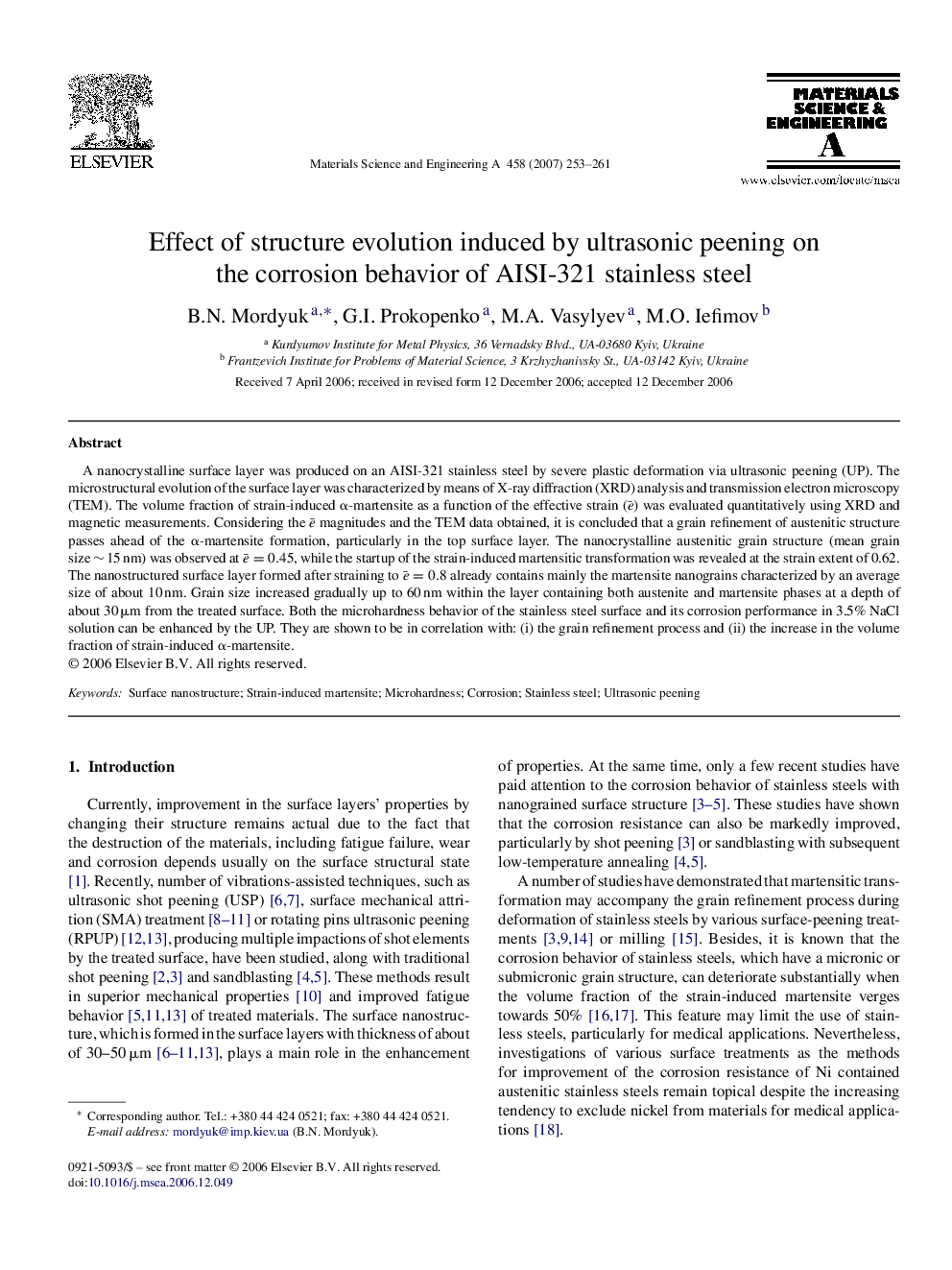| Article ID | Journal | Published Year | Pages | File Type |
|---|---|---|---|---|
| 1584036 | Materials Science and Engineering: A | 2007 | 9 Pages |
Abstract
A nanocrystalline surface layer was produced on an AISI-321 stainless steel by severe plastic deformation via ultrasonic peening (UP). The microstructural evolution of the surface layer was characterized by means of X-ray diffraction (XRD) analysis and transmission electron microscopy (TEM). The volume fraction of strain-induced α-martensite as a function of the effective strain (e¯) was evaluated quantitatively using XRD and magnetic measurements. Considering the e¯ magnitudes and the TEM data obtained, it is concluded that a grain refinement of austenitic structure passes ahead of the α-martensite formation, particularly in the top surface layer. The nanocrystalline austenitic grain structure (mean grain size â¼Â 15 nm) was observed at e¯=0.45, while the startup of the strain-induced martensitic transformation was revealed at the strain extent of 0.62. The nanostructured surface layer formed after straining to e¯=0.8 already contains mainly the martensite nanograins characterized by an average size of about 10 nm. Grain size increased gradually up to 60 nm within the layer containing both austenite and martensite phases at a depth of about 30 μm from the treated surface. Both the microhardness behavior of the stainless steel surface and its corrosion performance in 3.5% NaCl solution can be enhanced by the UP. They are shown to be in correlation with: (i) the grain refinement process and (ii) the increase in the volume fraction of strain-induced α-martensite.
Keywords
Related Topics
Physical Sciences and Engineering
Materials Science
Materials Science (General)
Authors
B.N. Mordyuk, G.I. Prokopenko, M.A. Vasylyev, M.O. Iefimov,
